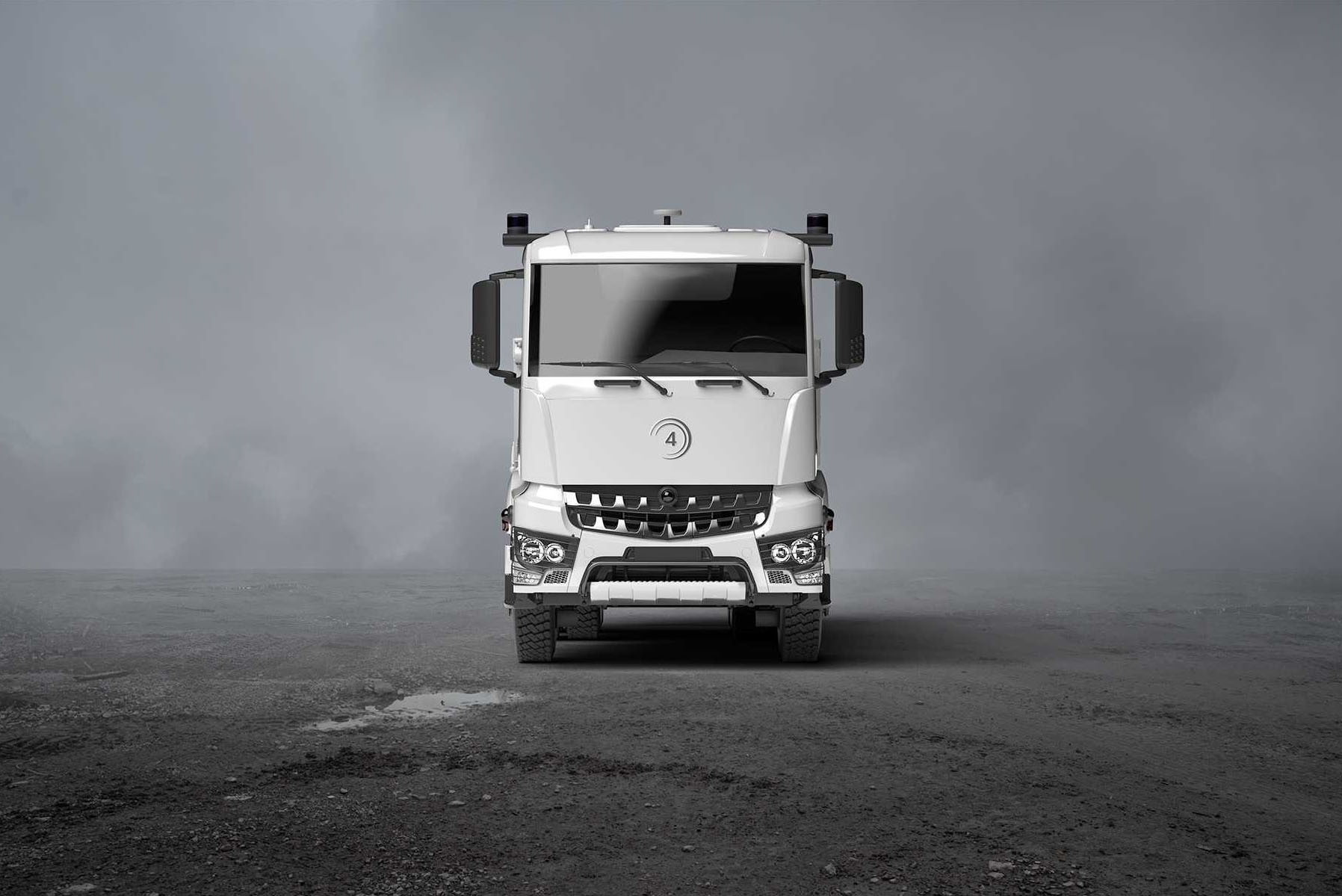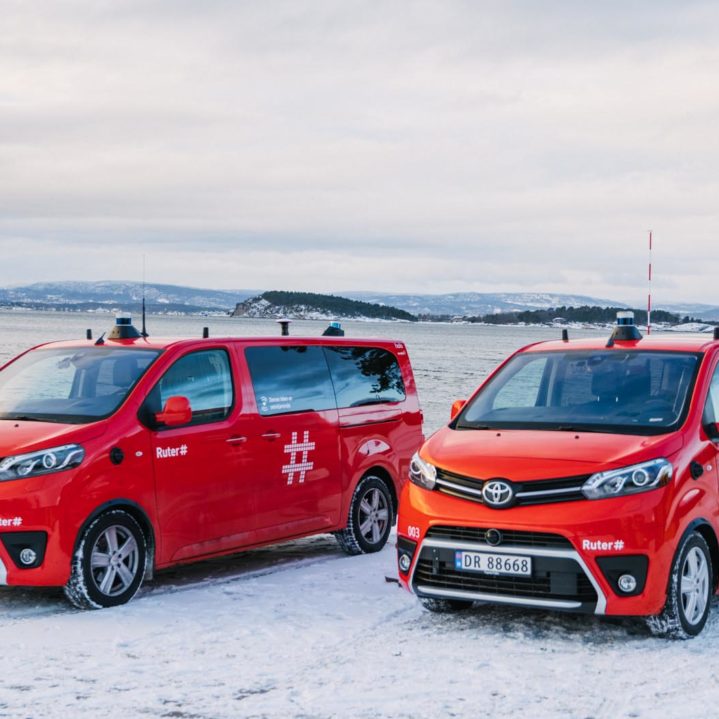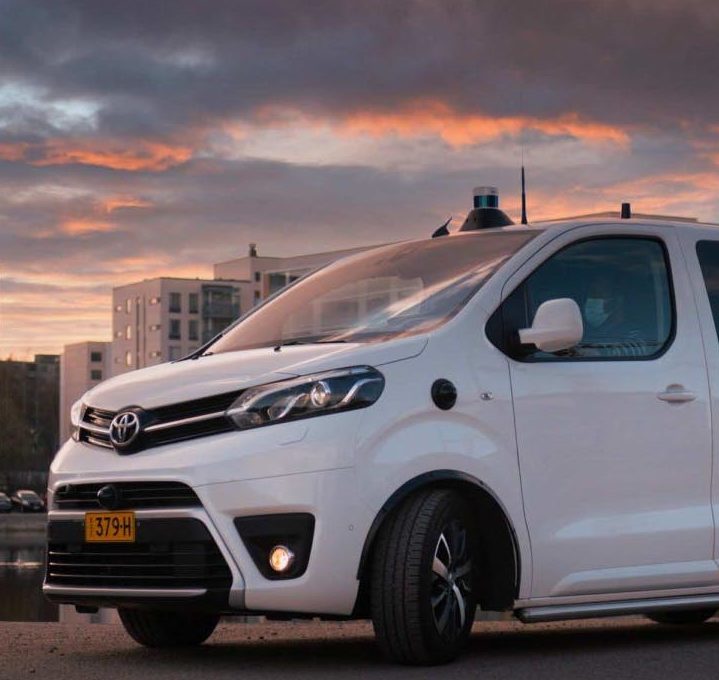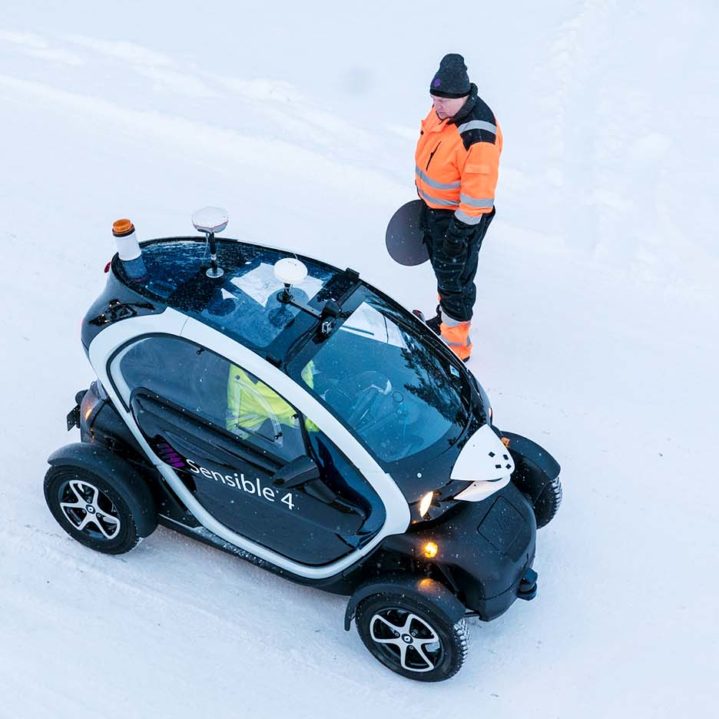Insight
The New Kids On The Self-Driving Block – Autonomous Trucks
The recent automotive news is dominated by negative headlines about the future of robo-taxis and robo-shuttles. However, the world of transportation and automation is diverse. The commercial vehicles that haul material and containers, in closed industrial sites, represent a commercially viable opportunity that can be realised today.

Self-driving trucks are moving from prototype to real-life industrial applications. At Sensible 4, we’ve been working on deployments of our SAE Level 4 vehicles across the world in the likes of Finland, Norway, and Japan. We are bringing this technology to industrial vehicles to optimise commercial operations.
The scale of the opportunity is in part due to the volume of industrial sites; they include mines, refineries, wood processing plants, ports, and factories. Common to all these sites is the need to move large amounts of goods, often dry bulk, from one place to another year-round, no matter the weather. Even though the distances are relatively short, nothing like highway hauling, there is a need for continuous, predictable, and reliable solutions. That makes the heavy-duty truck the preferred vehicle for most outdoor transport – since it offers more flexibility than alternatives like conveyor belts or AGVs that follow wires built into the road.
These industrial vehicles often pick a load, or a container, up from a pit, a ship crane, or some sort of conveyor belt or forklift and take it to a facility for further processing, over and over again, often continuously through the day and night. It is repetitive and continuous work that can be scheduled in a more flexible manner when automated.
The Worldwide Dump Truck Market is Worth Up To $25 billion
The dump truck market is worth up to $25 billion, add terminal tractors and outdoor AGVs and the market is worth in excess of $27 billion. It’s a big number, but given the variety of industrial and logistic sites where these vehicles are currently operating – it makes sense. For example, there are more than 35,000 sawmills in Europe alone. Common to all of these sites is the use of vehicles, hauling dozens of tons of material with a single load. So where does the automated truck fit into this picture?
The growing shortage of drivers is affecting the transportation industry across the world. Drivers are ageing and the nature of the job is not appealing to the younger generation. Today, there is a 20% shortage of truck drivers in Europe, by 2028 there will be a shortage of 280,000 truck drivers in JapanSource. The problem is big and growing.
The Case For Automated Trucks – Increased Productivity
Driver shortage or not, businesses are under pressure to improve productivity, that means moving more materials from point A to point B with limited resources. This leads to a need for better maintenance planning, so the vehicles suffer as little downtime as possible. Constant improvements to the engine and vehicle technology are designed to reduce fuel consumption and general wear and tear; this reduces vehicle maintenance costs and downtime. Today, these technological developments are also often leading to the introduction of either partly, or fully, electrified powertrains. As productivity demands increase – more has to be achieved with the available personnel. The cost of a manual driver, in the truck cabin, remains a significant part of the operating costs.
The old trick of reducing costs by increasing the size of the vehicle has been the trend for about as long as trucks have roamed the Earth. Looking back at the early twentieth century, the payload of a truck was something between one and two metric tons. The steel beasts of today can move over a hundred times more, making the biggest haul trucks practical for only a few use cases. But the path of going bigger is ending gradually. In its place is the smaller, more specialised vehicle that operates more efficiently, more flexibly, with lower emissions. This is where automation and small fleets of self-driving vehicles come into play.
Challenges of Automated Vehicles in an Industrial Environment
Automation sounds like an easy and obvious solution – the reality is that the outdoor industrial site is challenging for any technology. The industrial environment is often open and exposed to the elements. Continuous operations require technology that can operate in all seasons – from the sunnier summers to the harsher winters. The customer cannot afford for the operation to grind to a halt because of occasional winter snowfall. The solutions have to be able to cope with the demands of changing weather, such as sun, rain, wind, and snow. The solutions need to operate day and night – darkness poses a serious challenge for any systems that are camera-vision based. This is especially true for 24/7 requirements and for mixed indoor-outdoor environments.
The weather is only one adverse environmental condition that the vehicle has to contend with. The industrial site itself poses unique challenges; the presence of sand, dust, and mud has the potential to wreak havoc on laser scanners and cameras. It’s not just the presence of obstacles in the air that need to be considered – trucks in industrial sites operate on a mix of paved and gravel roads, but sometimes there are no roads at all, just a surface of mud and dust, or simply snow and ice. In an environment with little or no roads – lane-following automation systems are simply out of the question. The autonomous truck needs to be able to operate without the presence of road markings.
Autonomous Trucks in Industrial Sites – Why We’re Closer Than You Might Think
Whilst the industrial environment has many challenges, from the perspective of automated truck operations, it also has a number of key benefits. The material being transported varies across industrial sites – the means and method by which the material is transported tend to remain constant. You’ll normally see a truck drive just a few hundred metres, between two relatively fixed points, carrying out short and simple transportation tasks.
Industrial sites are also closed, which means there are no public roads going through the facilities. Everyone at the site is a trained professional so you drastically reduce the unpredictability that comes with the average jaywalking pedestrian or unfocused driver that we contend with on open roads. This makes the obstacle detection and response case for autonomous vehicles simpler. If remote operations or control is needed, the industrial sites are an easy target for arranging control centres and improving mobile telecom networks, compared to for example public transport or robo-taxis in urban areas.
Despite the technological challenges of automating a truck, the business case for any industrial site owner or operator within an industrial site is compelling. The commercial viability is why we are already seeing automated trucks operating in industrial sites.
Automated Trucks Are Already Operational
As automated driving technology is maturing, the vast amount of automation research and development is starting to materialise in the form of the first commercial use cases. The closed-area applications, such as the industrial use cases discussed in this article, are the obvious starting point where autonomous vehicle technology can be taken fully into commercial operation.
We, as an automated driving technology company, focus on enabling different types of vehicles to operate autonomously in any weather. Following the release of our automated driving software platform DAWN™ in 2022 – we have begun automated truck operations, together with a major truck manufacturer and customer, in a live industrial site.
We believe that automation software, such as DAWN™, will be adopted in industrial sites around the world. As more and more customers are ready to integrate their vehicles onto autonomous platforms, safer and more productive industrial operations will be commonplace. Autonomy can provide a more environmentally friendly solution as driving routes and electric charging schedules are easier to plan when driver shifts don’t need to be taken into consideration. Automation also enables operators to review their vehicle fleet – as they are no longer constrained by driver costs that correlate to the number of vehicles in use. With automation, more vehicles do not simply mean more driver costs. Some operations, that currently run with heavy haul trucks, can be replaced by a larger fleet of smaller electric trucks.
The recent industry news, surrounding robotaxis and shuttles, merely highlights what we already knew. The industry, and especially investors, need to see predictable and reliable solutions that offer commercial viability today. Commercial automation, within closed industrial-style environments, offers what the industry needs and the investors crave. The solution is already deployed in live sites because the commercial viability is clear. The need for all-weather operations has never been more acute.

Written by Roope Ritvos
Head of Strategy, Sensible 4
LinkedIn


